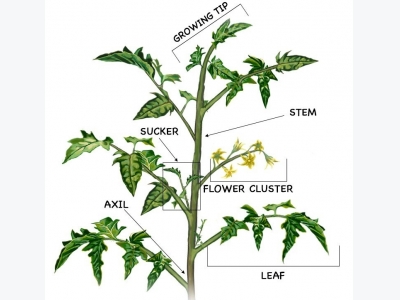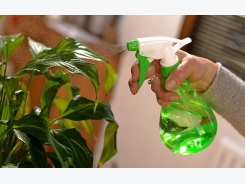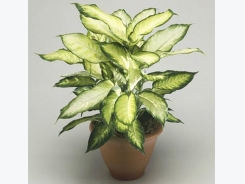How To Prune Tomatoes For A Big Harvest

Do you like to train your plants and check up on them almost every day? If so, then you may be a natural tomato pruner. Pruning tomato plants is an optional technique that some gardeners use to keep plants tidy, manipulate fruit size, and even speed ripening.
There is one big catch: You should only prune indeterminate varieties, which produce new leaves and flowers continuously through the growing season.
If you prune determinate varieties, you may reduce the harvest.
Pruning works best for plants trained on a strong vertical support, such as a trellis or stake like the one shown in the photo above. That way, it’s easy to both see what you are doing and keep the main stems carefully controlled by tying them to a single support. (Cages, on the other hand, naturally gather all of the limbs and support them without much help from the gardener, so there’s no need to prune — though you certainly can if you’d like.) Either way, the key is to prune enough, but not too much, so that the fruit receives both adequate sugars from the leaves and enough cover from the sun. A word of caution, though: Don’t prune tomatoes when leaves are wet, as doing so can help spread disease.
Here are some reasons to prune tomatoes:
1.Improved airflow and less disease.
With fewer leaves, pruned plants are less dense, allowing more air to move through the plants. The leaves dry faster after a rain, so they are less susceptible to the diseases that need prolonged moisture to develop — something that can be very helpful in wet climates. Plus, fewer leaves make it easier to spot insect pests that might otherwise be hidden by a thick canopy.
2.Bigger fruit.
Pruning at the right time directs energy toward creating and ripening fruit instead of making more leaves. Overall, you will probably have fewer fruit on a pruned plant, but it will be bigger. And, since pruned plants can be put a bit closer together in the ground because the growth is so vertical, you’ll have room for additional plants to make up the difference in harvest numbers.
3. Earlier ripening.
When a plant’s leaves and physiology have fewer fruit to take care of, that fruit ripens faster. This can really help in short season climates, where getting a tomato harvest is often a race against time, thanks to early fall frosts.
How to Prune Tomatoes (Indeterminate Varieties Only)
You’ll want to prune tomatoes throughout the season. Here’s what to do and when:
At Planting
– Remove the lower leaves when planting so you can bury plants deeply into the soil. If you’re planting a Bonnie plant, follow the directions on the wrapper.
– Remove any flowers present at planting time (even if they were on there when you bought the plant), so energy goes into leafy growth instead of fruiting at this early stage.
Early/Mid-Season
– Remove flowers until plants are 12 to 18 inches tall, so plants can direct more energy to the roots.
– Remove all leafy suckers beneath the first fruit cluster so they won’t slow the development of the fruit. Suckers are the little shoots that form in the spot (called an axil) where the leaf stem attaches to the main growing stem. In northern regions, many gardeners go further, removing all suckers as they appear. In warmer zones, though, experts often recommend practicing what’s known as Missouri pruning, where you pinch off the leaflets on the end of each sucker, leaving only the two base leaflets in place. As these leaves enlarge, they help shade fruit and protect it from sunscald. Try to remove suckers when they’re small enough to pinch with your fingers, so you don’t leave a gaping wound on the stem. If you do have to cut them, use a sharp knife or pruner blade to make a clean cut as close to the main stem as possible without damaging stem tissue.
Late Season
– As the growing season draws to a close, tomato plants are often still loaded with fruit. To speed ripening late in the season, remove the growing tip of each main stem about four weeks before the first expected fall frost. Called “topping,” this type of pruning causes the plant to stop flowering and setting new fruit, and instead directs all sugars to the remaining fruit. This way, the fruit will ripen faster, plus it becomes more likely that the green tomatoes you pick before frost will actually ripen when you bring them indoors. It may be hard to bring yourself to do this, but it will be worth it if you wish for ripe tomatoes! Of course, if you prefer your tomatoes to remain green for use in frying and jelly, you can certainly skip this step.
What if You already have big plants in the garden?
– Growing and pruning to a vertical stake may be not be an option for this year, but both determinate and indeterminate varieties benefit from removing the lower leaves to keep soil-borne diseases from splashing up onto the foliage. (You may already be seeing leaf spots and blotches on the lower leaves.) Clip away any leaves that are touching the soil and continue pruning up to a foot from the ground. Many tomato diseases, including septoria and early blight, can be present in soils, especially in the Northeast, Mid-Atlantic and upper Midwest. As plants get taller, you can continue removing lower leaves up to 18 inches from the ground, to help keep the disease from spreading. Work when the leaves are dry to avoid spreading disease.
– For plants supported by cages, you can remove some leaves from the center of the plant to increase airflow, which can help prevent and/or slow disease outbreaks. Research shows that leaves nearest a fruit cluster are the ones that send sugar to that fruit, so when thinning, do not remove leaves directly above and below the cluster. That way, leaves above can help shade the ripening fruit, while leaves below can send sugars to it.
Thanks to Steve Bogash of Penn State Extension and Shawn Wright of University of Kentucky Cooperative Extension Service for their contributions to this article.
Có thể bạn quan tâm
Phần mềm

Phối trộn thức ăn chăn nuôi

Pha dung dịch thủy canh

Định mức cho tôm ăn

Phối trộn phân bón NPK

Xác định tỷ lệ tôm sống

Chuyển đổi đơn vị phân bón

Xác định công suất sục khí

Chuyển đổi đơn vị tôm

Tính diện tích nhà kính

Tính thể tích ao hồ




 How to Dry Basil
How to Dry Basil  Keep This Plant In Your Bedroom Because It…
Keep This Plant In Your Bedroom Because It…